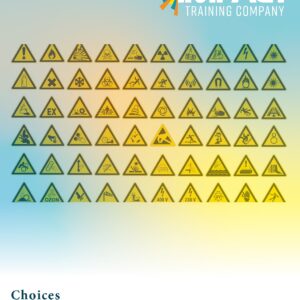Choices: Psychological Safety – Psychological Safety Workbook (Overview)
A healthy workplace isn’t just physically safe—it’s psychologically safe. Choices: Psychological Safety is a psychological safety workbook that helps individuals and teams understand what safety looks like in practice, identify unsafe behaviors (blaming, mocking, silencing), and make daily choices that promote trust and contribution. Specifically, it turns big culture goals into simple, repeatable actions any team can adopt.
Moreover, this psychological safety workbook pairs seamlessly with titles in our Healthcare Training Books and Certifications collection and the broader Books & Certifications catalog.
Why this psychological safety workbook matters
Fear shuts down learning, problem-solving, and innovation. Therefore, teams need clear language and tools to speak up, ask for help, and share ideas without payback. This psychological safety workbook offers concrete scripts, meeting routines, and coaching prompts so leaders and contributors can model respect especially during conflict, change, and high-pressure moments.
What’s inside the psychological safety workbook
Real-world scenarios for giving/receiving feedback, error reporting, and idea sharing
Guided reflections that surface triggers, assumptions, and default reactions
Micro-behaviors that build safety (curiosity questions, turn-taking, “thanks for speaking up”)
De-escalation tools to replace blame with problem framing
Team rituals (check-ins, retro formats, learning reviews) that normalize speaking up
Action plans that turn insight into weekly habits
Additionally, the psychological safety workbook includes facilitator notes that make it easy to run in huddles or coaching sessions.
How to use the psychological safety workbook
Use it three flexible ways:
Self-study: one chapter per week with a five-minute habit target.
Team huddles: practice one scenario; capture one “keep/try” behavior.
Facilitated workshops: combine with our live Courses & Certifications for role-plays and skills validation.
For timing and rollout, check dates on the training calendar or connect with our team to tailor a plan.
Outcomes you can expect
Consequently, teams learn to:
Replace criticism and silence with curiosity and constructive challenge
Give and receive feedback without defensiveness
Report risks and near-misses early, without fear of blame
Hold respectful, fast problem-solving conversations
Reduce burnout by sharing load, learning openly, and improving together
Ultimately, this psychological safety workbook strengthens trust, reduces turnover, and accelerates improvement so quality rises and drama falls.
Who it’s for
Healthcare teams coordinating across shifts and departments
Educators and HR building supportive learning and onboarding environments
Supervisors and leads who coach culture and set meeting norms
Interdisciplinary teams (Transport, EVS, Supply Chain) working in high-stakes settings
Likewise, it complements our ethics and communication titles on the Books & Certifications page for a complete culture toolkit.
Implementation tips & next steps
Start small, then scale. Pilot with one unit for four weeks; track simple indicators (voice participation, near-miss reporting, rework). Next, add a monthly retrospective and a rotating “meeting host” to spread safe-meeting skills. Finally, align workbook practice with a focused course from our Courses & Certifications catalog and lock in dates on the training calendar. For bulk orders or facilitation support, reach out via Contact Us.






Reviews
There are no reviews yet.